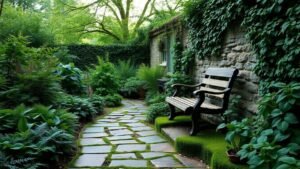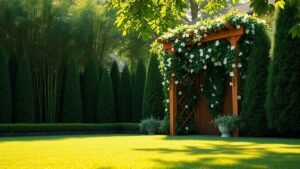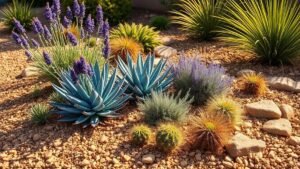Not every garden space is bathed in sunlight—but that doesn’t mean it has to be empty. Many plants thrive in low-light or partial-shade conditions, making it possible to create a lush, vibrant garden even in shaded areas.
In this guide, we’ll explore the best low-light plants for outdoor and indoor spaces, and how to keep them healthy and thriving.
1. Understanding Low-Light Conditions
Before choosing plants, it’s important to define what “low light” means.
Types of Low-Light Areas:
- Full shade: Less than 2 hours of direct sun per day
- Partial shade: 2–4 hours of filtered sunlight
- Dappled shade: Light filtered through tree canopies
- Bright indirect light: Indoor spaces near a north-facing window
Different plants tolerate different levels of shade, so match the plant to the conditions.
2. Best Outdoor Low-Light Plants
These plants are perfect for shady corners, under trees, or along north-facing walls.
Top Picks:
- Hosta: Known for large, textured leaves and shade tolerance
- Ferns: Ideal for moist, shady spots; adds soft texture
- Astilbe: Produces feathery flowers and thrives in part shade
- Caladium: Colorful foliage that brightens up dark areas
- Heuchera (Coral Bells): Tolerates shade and adds year-round color
- Lungwort (Pulmonaria): Unique spotted leaves and early spring flowers
- Bleeding Heart: Beautiful arching stems with heart-shaped flowers
These perennials will return year after year with minimal maintenance.
3. Best Indoor Plants for Low Light
If you’re gardening indoors, these houseplants do well without direct sunlight.
Top Choices:
- Snake Plant (Sansevieria): Almost indestructible and great for air purification
- ZZ Plant: Glossy, drought-tolerant, and thrives in dark corners
- Pothos (Devil’s Ivy): Fast-growing, trailing vine for shelves or hanging baskets
- Peace Lily: Tolerates low light and blooms periodically
- Cast Iron Plant (Aspidistra): Extremely tolerant of low light and neglect
- Dracaena: Tall and narrow—great for filling vertical space
- Chinese Evergreen (Aglaonema): Colorful foliage and low-light adaptability
Rotate pots occasionally to ensure even growth and keep them dust-free for maximum light absorption.
4. Tips for Thriving in Shade
Shady spots come with their own set of challenges. Here’s how to keep your low-light garden healthy:
Soil and Watering:
- Ensure good drainage to avoid rot
- Add organic matter like compost to enrich the soil
- Water only when the soil is dry at 1–2 inches deep
- Avoid soggy soil—shade + moisture = fungus risk
Light Enhancement:
- Use light-colored mulch or stones to reflect light
- Place reflective surfaces nearby (mirrors, white walls)
- Trim overhanging branches to increase filtered light
5. Combine Textures and Colors
Shade gardens can be just as eye-catching as sunny ones—with the right design.
Design Tips:
- Use bold foliage (caladiums, hostas, ferns) for contrast
- Mix leaf shapes and heights for layered interest
- Add pops of color with shade-loving flowers (impatiens, begonias)
- Include stepping stones or garden accents for structure
Even without flowers, rich foliage can create a stunning visual effect.
6. Add Containers to Brighten Shady Spaces
Containers give flexibility and allow you to move plants where they grow best.
Ideas:
- Use pots with shade plants near entryways or patios
- Group several containers with different heights and leaf textures
- Combine shade-loving herbs like mint, parsley, and cilantro
Container gardening works especially well on shaded balconies or porches.
7. Troubleshooting Low-Light Garden Issues
Common Problems:
- Slow growth? Add compost and try reflective surfaces
- Leggy plants? Rotate and prune back lightly
- Fungal issues? Improve airflow and water in the morning
- Yellowing leaves? May indicate overwatering or lack of nutrients
Stay observant and make small adjustments as needed.
Conclusion: Let Shade Work for You
Low-light gardening doesn’t mean settling for dull, lifeless spaces. With the right plant choices and care, shaded areas can become peaceful, thriving retreats full of texture, color, and calm.
Embrace your shade and grow a garden that glows—even without the sun.






